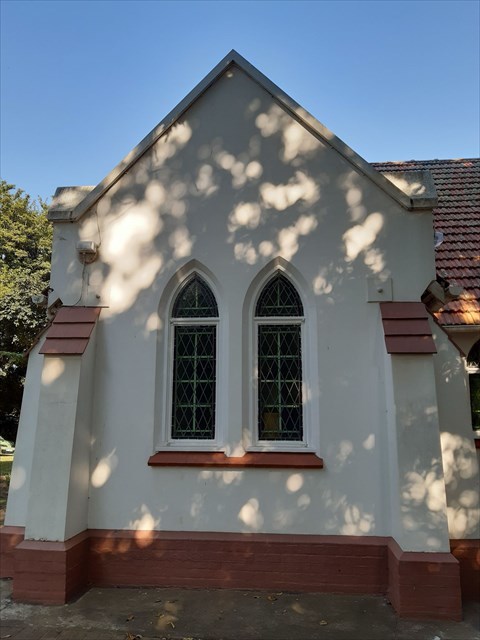UMC – Historical Church
Umhlali Methodist Methodists have been in Umhlali since the 1870`s. The Oldest marriage register records in the Umhlali Chapel` in 1875. The current building was only dedicated, in 1924.


BALLITO, KWADUUKUZA History
This region was favoured by King Shaka of the Zulus for military barracks, with his capital becoming KwaDukuza (also called Stanger in more recent history) after the death of his mother. One of these Zulu barracks was called Mdumezulu ("where the heavens thunder"). A magisterial post was established near the barracks in 1850 with Mr C.H. Williams becoming the first resident magistrate. For a time the settlement was even known as Williamstown. The first Anglican church services were held at his home. (The ruins of these early settler buildings can be seen on the property at "Foxhill"). However, Williamstown faded in usage after the magistrate departed and the more descriptive term, "Umhlali", remained in use. Umhlali is the Zulu name for the Monkey Orange tree (Strychnos spinosa), which grew abundantly along the banks of the Umhlali river. It also means "the place of waiting" because settlers and locals would have to wait on the banks before crossing the river on a northward journey.
In 1857 an earthwork fort, Fort Scott, was built by the 85th Regiment of Foot (Bucks Volunteers) on a knoll west of the present highway near the turnoff to Salt Rock. The first church at Umhlali was a temporary wattle-and-daub building of coarse grass daubed inside with red mud. It was built for about £90 with the intention of servicing the fort. Most settler buildings of this time were wattle and daub, thatched with tambootie grass. Daub was composed of clay or ant-heap, tempered with sand and cow dung. Windows were hung on butt hinges.
Unfortunately this first church burnt down shortly after completion. A new fort called Fort Williamson was begun in 1861 close to the mouth of the Thugela, which saw the Umhlali fort being in disrepair in just over a decade after first being built. The same fate befell Fort Williamson in the 1870s, and when the British invaded Zululand in 1879 they replaced it with Fort Pearson overlooking the Thugela drift where the present highway crosses over. Fort Williamson was abandoned without ever seeing any action. Given the state of disrepair of the local fort, the jail in Williamstown (Umhlali) was designated as a laager for the local farmers in 1878. By March 1879 it was in a state of defence. Foundations on the farm Seaforth to the east of the old main road (the old Robbins Farm) are all that remains of this laager defence. While understandably nothing remains of the first wattle-and-daub Anglican church, almost nothing is evident of the next Anglican church to be built in Umhlali, St James.
St James (Consecrated, 1864 – Demolished, 1889)
The wattle-and-daub church was rebuilt but this time with a more permanent structure, using the same design as the Anglican church at Verulam. as a plain building with the usual pointed arches over windows and doors. The gable ends were terminated with small pyramids. There was a large east window with a pointed arch. When St James closed in 1889 the pews were donated to Mr Liege Hulett for the Umhlali Methodist Chapel. The next Anglican church building in Umhlali was only to be built some two decades later.
St Albans (Consecrated, 1909 – Disassembled, 1921)
The rinderpest swept into Zululand in 1896 from the north, decimating cattle farming, and in the same year, the region experienced a bad drought, knocking agriculture. The Anglo-Boer War (1899–1902) heralded in the new century and on the back of this, as the British had to maintain long lines of supply and communication, industrialization had come into its own, especially the prefabrication of parts. Kit wood-and-iron utility buildings, which were popular in the diamond rush to Kimberley and the gold rush to the Witwatersrand, came back into their own for military use. Church organisations also made use of this trend to fast track the building of churches in the colonies. Two decades after the demolition of the previous Anglican church, St Albans was built. A wood and galvanised iron kit church was erected at a new site near Umhlali (on what is now the R102), not the previous site of St James. The bishop of Natal, Frederick Samuel Baines consecrated this new building in 1909. The design was typical of church kits that were exported from England and reassembled overseas. Many can still be found today in the Midlands. These buildings were ordered from a catalogue and shipped out in kit form from England.
St Albans was disassembled and sold to Darnall, further north, to make way for the construction of All Souls in 1921.
All Souls (Consecrated, 1921 – Moved, 2011)
A new church was built in Umhlali of brick and plaster and dedicated on 30 May 1921 by Frederick Samuel Baines, Bishop of Natal. This forth church was renamed All Souls as a memorial to the people of the district who were killed or served during the First World War (1914–1918). A transept was added to All Souls in the late 1980s along with a hall.
In order to qualify for this cache you need to:
1) Go to the Main building and take a photo of you or personal item (like GPS) at the location, showing one of the main inauguration plaques or interesting section of the building.
2) Walk across the road and take a photo of you or personal item (like GPS) at the location, showing the memorial “ We will Remember them”
Include the photo's in your online log and enjoy the historic walk and views

Virtual Rewards 2.0 - 2019/2020
This Virtual Cache is part of a limited release of Virtuals created between June 4, 2019 and June 4, 2020. Only 4,000 cache owners were given the opportunity to hide a Virtual Cache. Learn more about Virtual Rewards 2.0 on the Geocaching Blog.